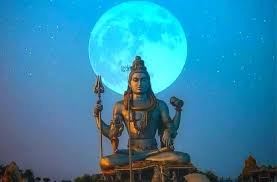By Zile Singh
Mythically, over 15,000 years ago, a Being, 9 – feet tall appeared in the upper
peaks of the Himalayas. It was a Full Moon Day after the Summer solstice. This Being
was Lord Shiva, the Adi-Yogi at Mount Kailash.
Kailash is considered the laboratory of human consciousness. Shiva was the
first to experiment at Kailash. The others who experimented at Kailash were the first
Jain Tirthankara, Rishabha, the two great personalities of Buddhism, Manjushree and
Avalokiteshwara and some other great figures of Tibetan Bon tradition.
Maha Shivaratri, the festival of Lord Shiva falls on the New Moon day in the
month of Maagha according to the Hindu calendar. The Day falls at a time in the Indian
sub-continent when nature is at its best. It is the blooming season, time of ‘Basant’ — a
much- awaited Summer! In the Christian calendar, the date falls between the third week
of February to the first week of March each year. This year the day fell on March 8th.
Maha Shivaratri is a Hindu festival. People fast on the day of Shivaratri and sing
hymns and praises in the name of Lord Shiva in the well- decorated temples all over the
globe. Wood apple leaves, cold water and milk are offered to the Shiva Lingam as these
are believed to be Shiva’s favourites.
Maha Shivaratri literally means “great night of Shiva ''. Lord Shiva is one the
Hindu Trinity Godheads – Brahma, Vishnu, and Shiva. The Trinity has been attributed as
the Creator, Preserver and Destroyer, respectively. The destroyer here carries different
meanings. If Shiva were the destroyer, the world would have been no more today. Its
inherent meaning, which most of his devotees are unable to perceive and comprehend,
is that Shiva does not believe in a stereotypical, boring, and monotonous creation. He
always believes in change.
Lord Shiva is the epitome of newness, coolness as well as a vibrant motion to
break the monotony. His above attributes can be substantiated by the fact that Lord
Shiva has several forms. He is a pensive thinker, an ascetic, most of the time in deep
meditation, a lover, a householder, a veetragi and a thundering dancer known as Natraj
(the King of Dancers).
He wears the Moon on his head and a Trident in his hand. Both these symbols
reflect calm and constructive energy in peacetime and fearful and destructive energy
during turbulent times. The snake around Shiva’s neck shows that he was beyond fear.
The physical environment in which he lived suggests that his life was of an Adi-Vasi.
In the present-day context, Lord Shiva is a symbol of love and feminism. In a
unique mystical symbol, he is ‘Ardhanareeshwara.’ According to a story, Bhringi Rishi
was an ardent devotee of Shiva. Every morning he used to come for Shiva’s
circumambulation as a mark of respect. Shiva’s wife Parvati was envious why Bhringi
was not respecting her also. Shiva asked her to come closer. Bhringi turned into a
mouse and encircled only Shiva. Parvati was fuming. Shiva took her on his lap. Then
Bhiringi became a bird and flew around Shiva only. This was a height of frustration for
Parvati. Ultimately Shiva pulled her close and made her a part of him. Thus on the left
side Shiva became a female and on the right half he remained as male. He turned into
Ardhanareeswara – a composite form of a male and a female. Bhringi finally had to pay
obeisance to both, Shiva and Parvati as One.
There are many mythological legends associated with this day. One legend is
that once the Earth was faced with an imminent danger. Goddess Parvati pleaded with
Lord Shiva to save the world. Pleased with her prayers he saved the world from
destruction and from then onwards people started worshipping Shiva as a saviour.
Lord Shiva did not offer his devotees a belief system. His insistence was to be a
seeker rather than a believer. He did not exhort his disciples to worship or pray
passively. He invited them to explore and participate in purposeful dialogue. Shiva is
an invitation to consciousness and responsibility. He was interested in good actions
rather than the rigidity of rites, rituals, and superstitions. As Natraj, Shiva’s dance is a
roaring ecstasy of life instead of a brooding mood. He is both – a temporal and a
spiritual incarnation.
———————
Zile Singh can be contacted at [email protected]





